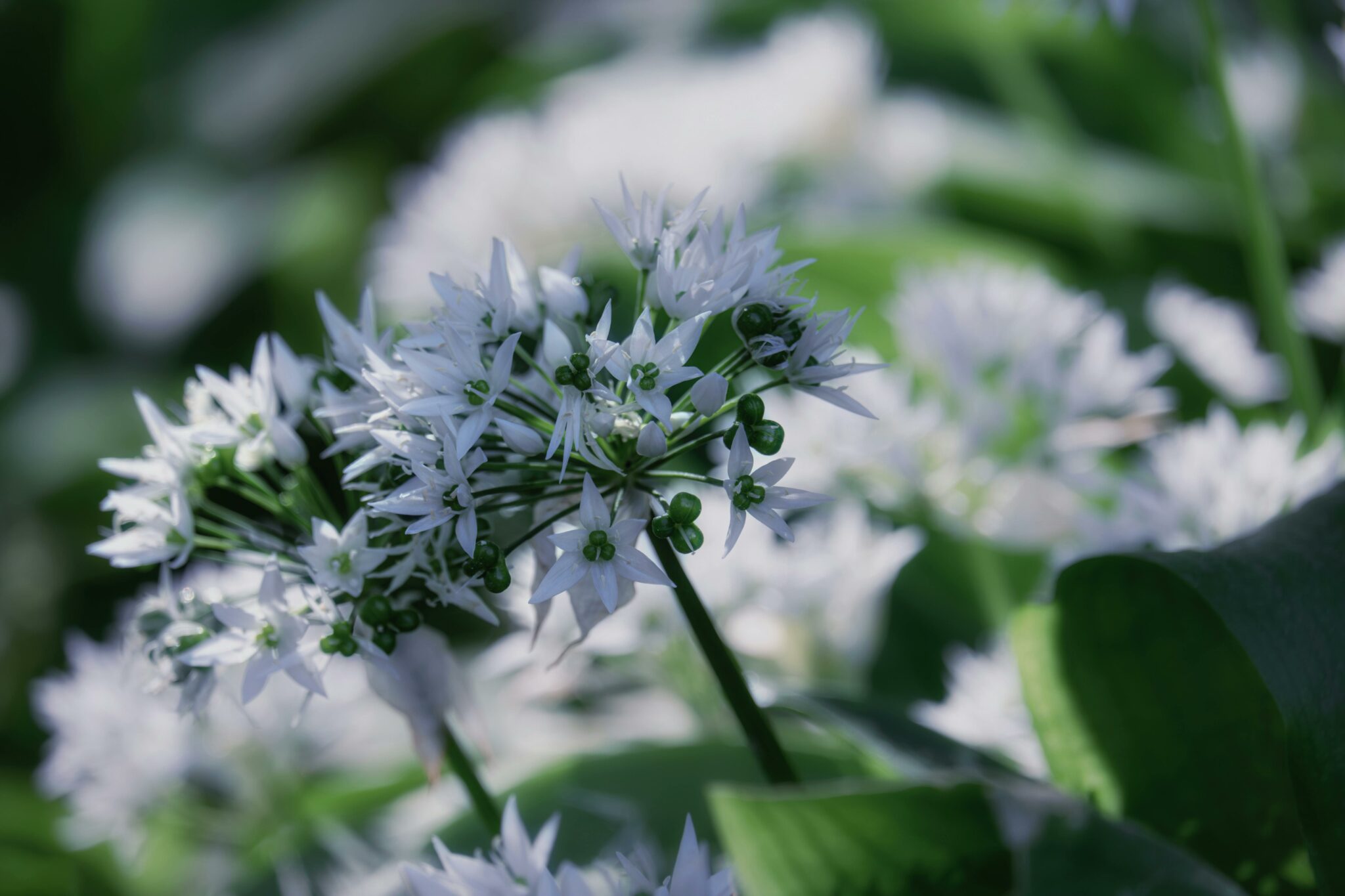
Wild garlic
Spring is the time to harvest wild garlic. If you come across wild garlic, take the opportunity to gather a bunch and bring it home. Its flavor is similar to garlic and is a perfect substitute for those with IBS who miss garlic. There are many ways to store and cook with wild garlic. Here are some tips
Dried wild garlic
Rinse the wild garlic and gently dry it with paper towels. Cut off the stems and arrange the leaves on a baking sheet lined with parchment paper. Place the sheet in the lower part of the oven at 100°C (212°F) for about 30 minutes if using a conventional oven. In a convection oven, you can place the sheet anywhere, at the same temperature and time. Once dried, chop the wild garlic and store it in an airtight container. It can also be kept in zip-lock bags.
Frozen wild garlic
You can either divide the leaves into freezer bags or chop them into the desired size. Freeze them, and take out the amount you need when required.
Wild garlic oil
Finely chop or blend the wild garlic and mix it with a neutral olive oil. Let it sit for about 1-2 weeks. Strain the mixture and pour it into a bottle. Use it in the same way as garlic oil—it’s great for everything!
Wild garlic butter
Mix finely chopped wild garlic with butter and a bit of sea salt (and pepper, if desired). Place the butter in plastic wrap and roll it into a log. Refrigerate and slice it to use with meat, fish, chicken, or to make wild garlic bread in the oven. The butter can also be frozen and will keep for several months. Take out pieces as needed. You might also want to try wild garlic pesto—it’s delicious with pasta or on a slice of bread.
Another good onion option: spring onions!
Spring onions are also a good substitute that are gentler on the stomach and usually work for most people. The rule regarding FODMAPs and onions is that the greener parts are better, while the white parts are more problematic because that’s where the fibers are concentrated. Therefore, onion varieties with greener parts are suitable for use even during the elimination phase.
We like spring onions because their green parts are more tender and fresher than those of leeks. You can use spring onions just like regular onions in all types of cooking. So where do you draw the line between the green and white parts? There is a light green section in between. You’ll have to feel your way a bit. Initially, it may be best to use only the dark green parts. Once you have a better understanding of how your stomach reacts, you can start adding the light green parts as well.
So, feel free to test both wild garlic and spring onions – and see if they work for your stomach!
Belly Balance digital treatment
In the Belly Balance app, you can log symptoms, keep a food diary, scan products, find FODMAP lists, and much more to help you manage your IBS.
Sofia Antonsson
Reg. Dietitian, Belly Balance
Read more about

IBS - What is it?
Bloated , constipated or having a gassy stomach? IBS or Irritable Bowel Syndrome is a functional gastrointestinal disorder, meaning no physical issues can be found in the stomach or intestines; they just don’t function quite as they should.

How the app works
Download the app and become part of our community. We assist you in achieving a calm and happy stomach through treatment and tools available directly in the app.

About FODMAP
By learning which foods upset your stomach, you can make conscious choices and get quick symptom relief. With the low FODMAP diet, you receive structured assistance in understanding which foods your body tolerates better than others. No more guessing and pondering – you get the answer straight away!

